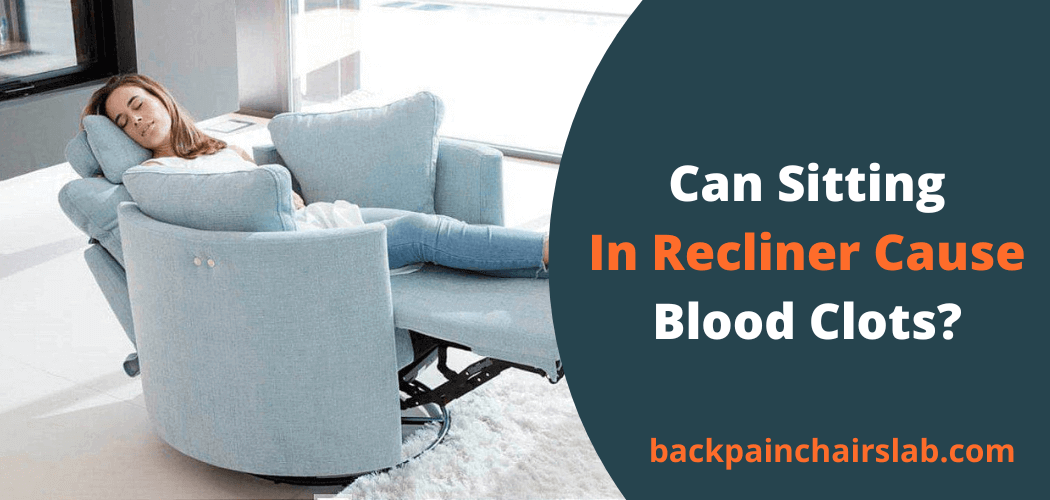According to a new study, sitting in a recliner might increase your risk for blood clots. The study found that people who sit in a recliner for more than three hours per day are at an increased risk for blood clots.
So, if you’re someone who likes to take advantage of the comfort that a recliner provides, be sure to get up and move around every few hours. Doing so could help reduce your risk of blood clots.
What are blood clots and how do they form?
Blood clots are clumps of blood that have coagulated, or hardened. They can occur anywhere in the body, but they’re most common in the legs. Blood clots usually form when there’s an injury to a blood vessel, such as a cut or scrape.
When the vessel is damaged, its walls break apart and start to bleed. To prevent too much blood loss, the body forms a clot at the site of the injury.
Clots can also form when there’s no injury present. This can happen if the blood flow is slowed down for some reason, such as sitting in one position for too long (like when you’re on a long flight or car trip). When blood flow slows, it has a harder time moving through the vessels. This can cause the blood to pool and form a clot.
Can Sitting In A Recliner Cause Blood Clots?
Sitting in a recliner for a long duration can increase your risk for blood clots. When you’re sitting, your muscles are not contracting and your blood flow slows down. This can cause the blood to pool in your vessels and form a clot.
If a clot forms in one of the deep veins of your legs (known as a deep vein thrombosis, or DVT), it could break off and travel to your lungs. This is called a pulmonary embolism, and it can be life-threatening.
List of: Best Office Chair for Leg Circulation & Leg Pain Relief
While the risks associated with sitting in a recliner are relatively low, it’s still important to be aware of them. If you have any concerns, talk to your doctor.
How to prevent blood clots from forming while sitting in a recliner?
There are a few things you can do to prevent blood clots from forming while sitting in a recliner or any other type of chair:
- Get up and move around every few hours, even if you’re just walking around your house or office.
- Avoid sitting in one position for too long. If you’re on a long flight or car trip, get up and walk around every few hours.
- Exercise regularly. This will help keep your blood flowing properly.
- Wear loose-fitting clothes. Tight clothing can restrict blood flow.
- Elevate your legs when you’re sitting down. This will help reduce the pooling of blood in your vessels.
If you have any concerns about your risk for blood clots, talk to your doctor.
Are there any other health risks associated with sitting in a recliner for an extended period?
Sitting in a recliner the whole day then it can also lead to other health problems, such as:
1) Back pain
When you sit in a recliner, your back hasn’t supported the way it is when you’re sitting in an upright position. This can cause strain on your back muscles and lead to pain.
2) Neck pain
Recliners often put your head and neck at an awkward angle. This can lead to muscle strain and pain in the neck and shoulders.
3) Headaches
The awkward angle that recliners often put your head and neck in can also lead to headaches.
Numbness and tingling in the limbs. When you sit in a recliner for too long, you might notice that your arms or legs start to feel numb or tingly. This is caused by the lack of blood flow to those parts of the body.
If you experience any of these problems, talk to your doctor. They can help you find ways to reduce your risk for these complications.
FAQs – Sitting on Recliner Cause Blood Clots
Can be sitting in a hot tub help reduce the risk of blood clots?
There is some evidence that sitting in a hot tub can help reduce the risk of blood clots. The heat from the water can help increase blood flow and prevent the blood from pooling in your vessels.
However, it’s important to talk to your doctor before using a hot tub, as there is also a risk of overheating.
Is water good for blood clots?
There is some evidence that water is good for blood clots. Drinking plenty of water can help increase blood flow and prevent the blood from pooling in your vessels.
However, it’s important to talk to your doctor before using water therapy, as there is also a risk of overhydration.
Can walking help prevent blood clots?
Yes, walking can help prevent blood clots. Walking helps increase blood flow and prevents the blood from pooling in your vessels.
It’s important to walk at a comfortable pace so that you don’t overexert yourself. If you have any concerns, talk to your doctor.
Wrap Up
Sitting in a recliner for long hours can cause blood clots. This is because when you recline, the position of your legs and feet changes which slow down the circulation of blood.
This puts you at risk of developing deep vein thrombosis (DVT), a condition where a blood clot forms in one of the deep veins in your body. If left untreated, DVT can lead to complications such as pulmonary embolism, heart attack, or stroke.
To reduce your risk of developing DVT, try to get up and move around every hour or so if you’re sitting in a recliner. You can also wear compression socks to help improve blood flow.
